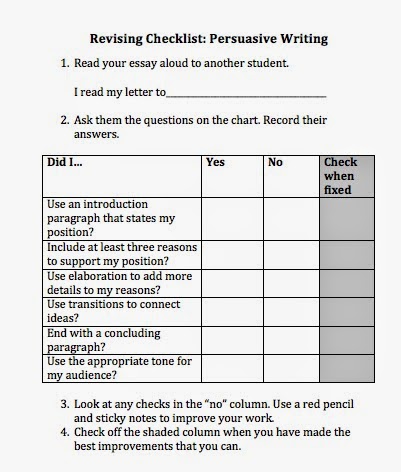My goal as a writing teacher early in the year is to provide as much support as possible in the early stages of writing. By May, I have pulled back on the level of support.
However, clear directions are essential to successful peer response. Last week, students worked with partners to revise their persuasive letters to third graders. I used a peer response frame that follows the pattern we've used all year.
 The best part of May, however, is that students will check off "No" and have conversations with their partners. Several students discussed their conclusions: Are two sentences enough? They tried to bring the question to me to referee, but I sent it right back to them. What do you think? What is the job of a conclusion? How should a conclusion fit in with the rest of the piece?
The best part of May, however, is that students will check off "No" and have conversations with their partners. Several students discussed their conclusions: Are two sentences enough? They tried to bring the question to me to referee, but I sent it right back to them. What do you think? What is the job of a conclusion? How should a conclusion fit in with the rest of the piece?Students have finally learned where to find all of the materials and move around the room to gather what they need. (We're running out of sticky notes and pencils, though!) They don't mind when I assign them partners and work readily with everyone.
And I watched this unfold last week with a bittersweet satisfaction. This little civilization that we've created together is coming to an end. Just as it comes into full flower, the last days of the school year loom over us like a shadow.
Oh, well. These final writing pieces, the artifacts of our classroom, are going to next year's students--a little piece of the civilization handed from one group to another.
Tweet


No comments:
Post a Comment